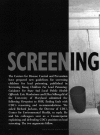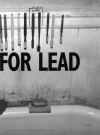Full text
PDF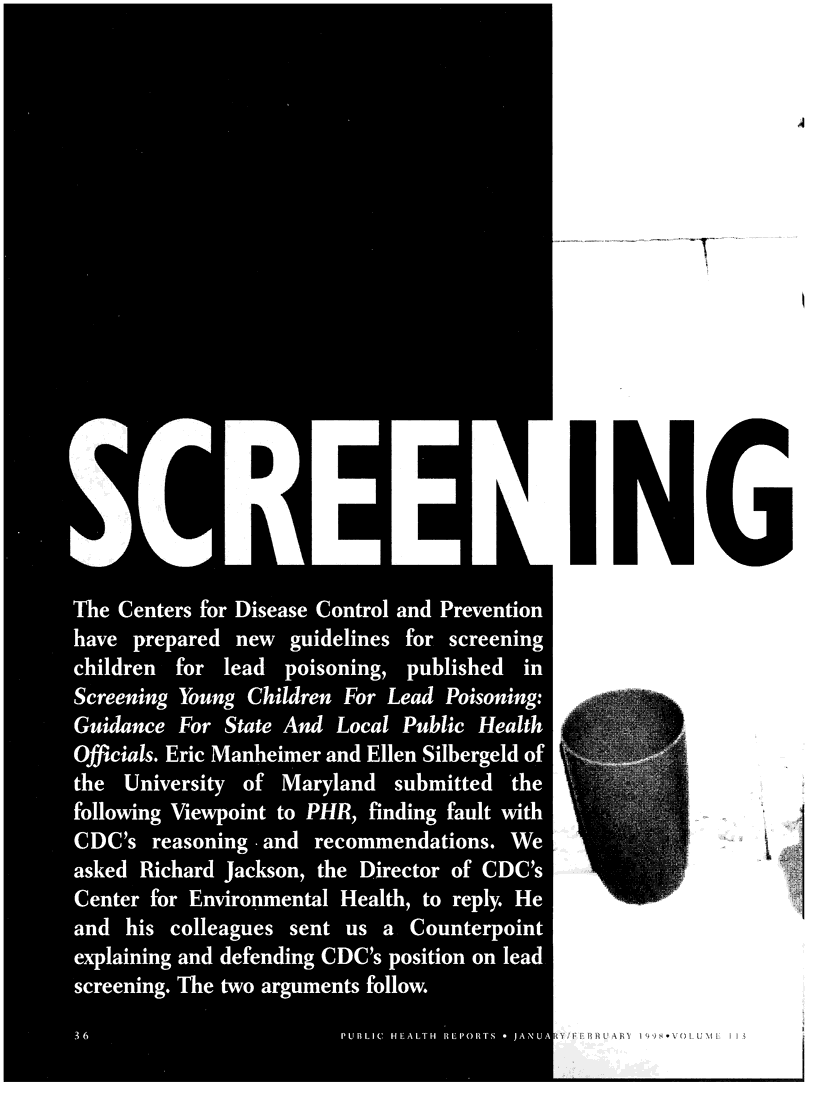
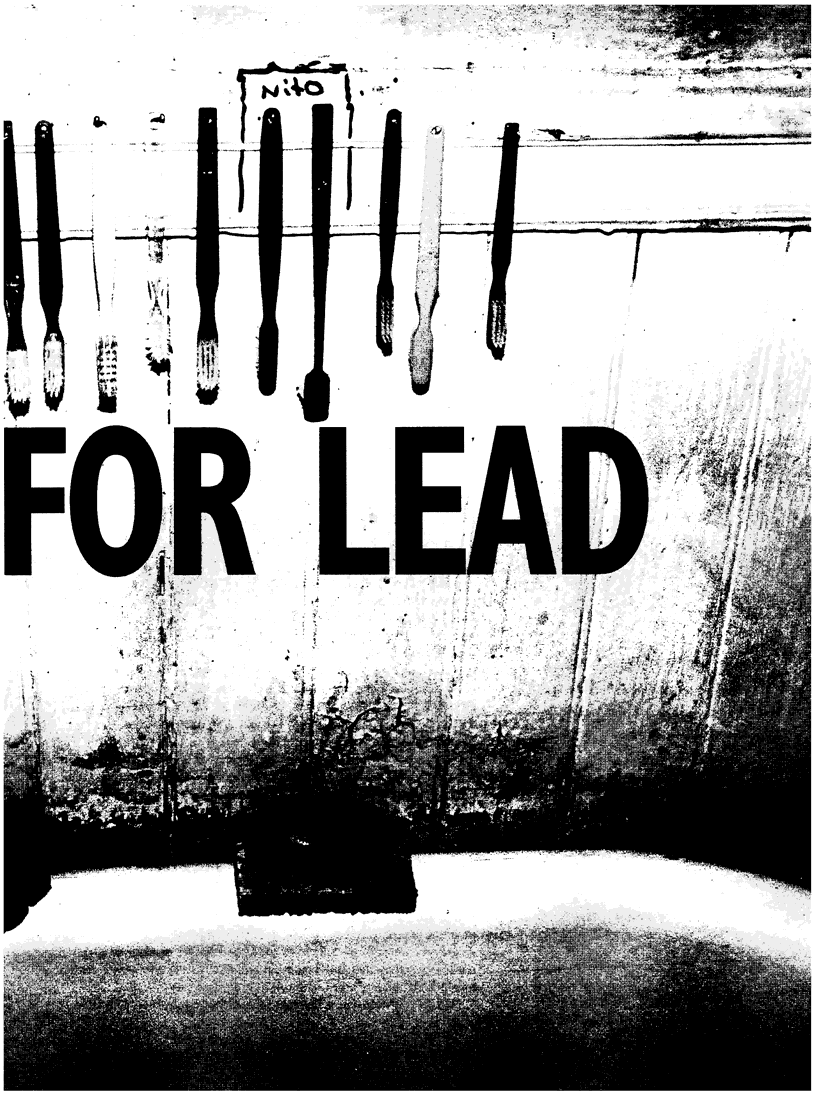
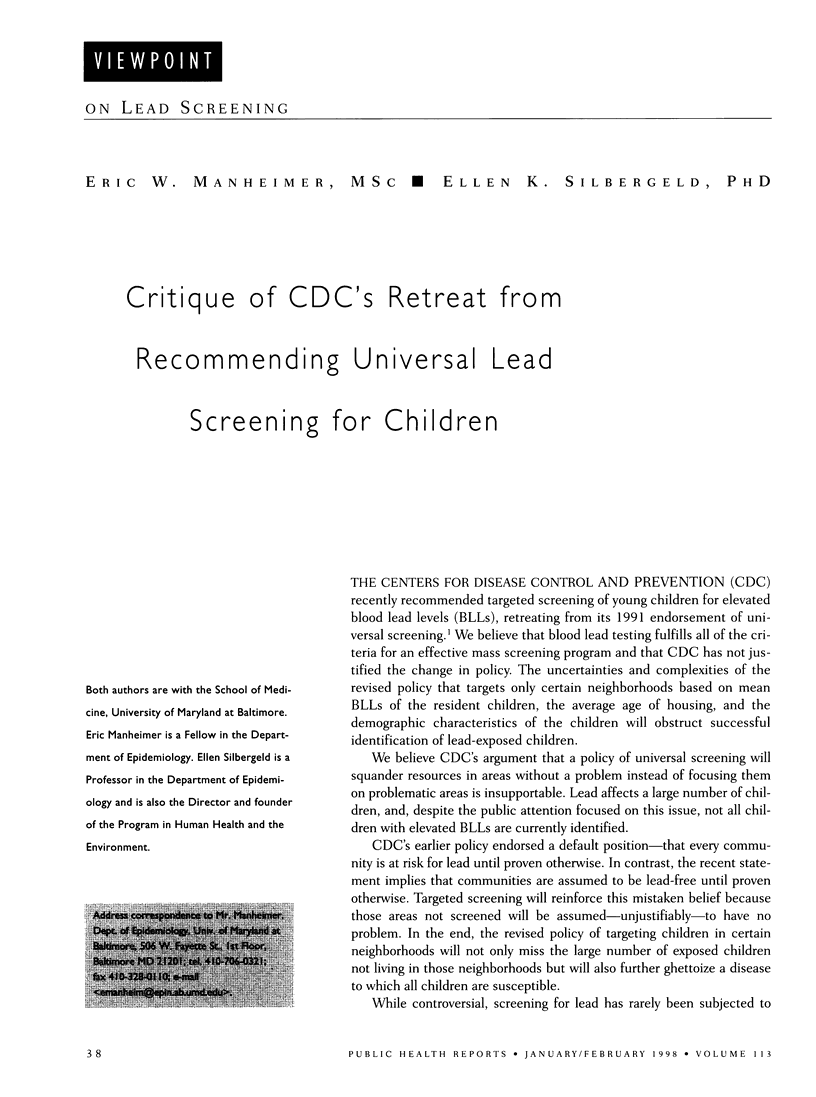
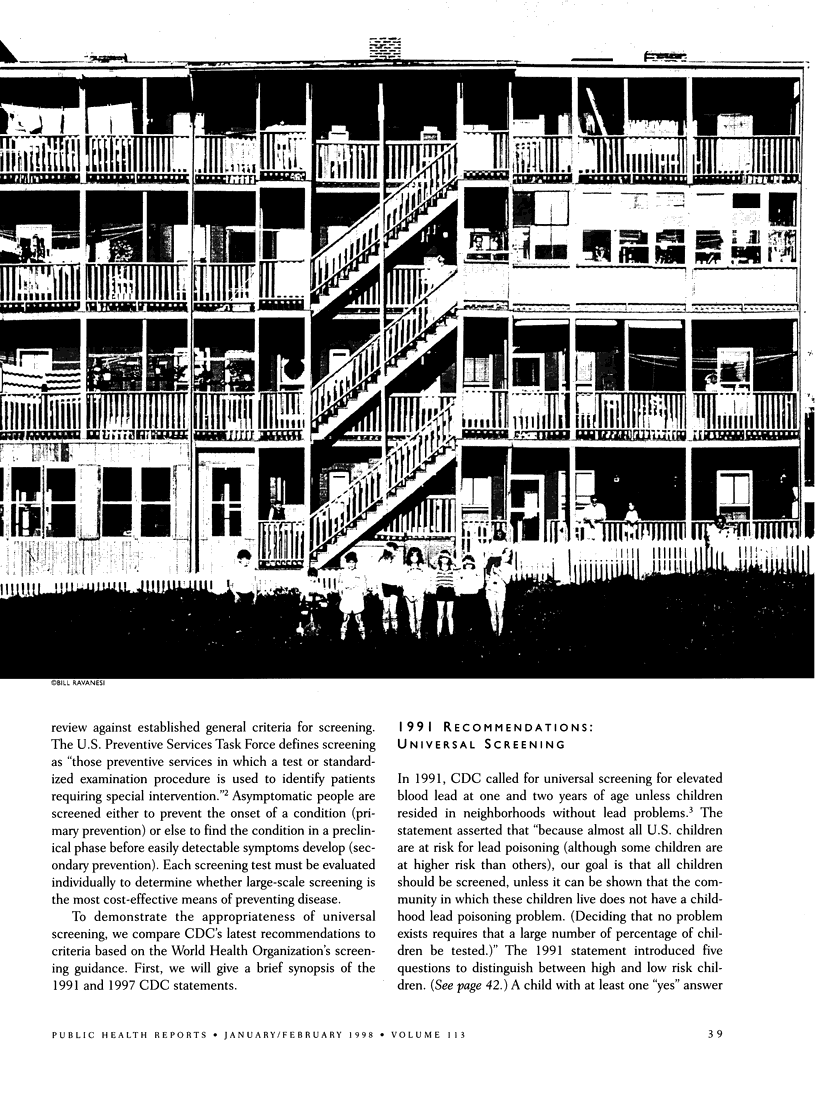
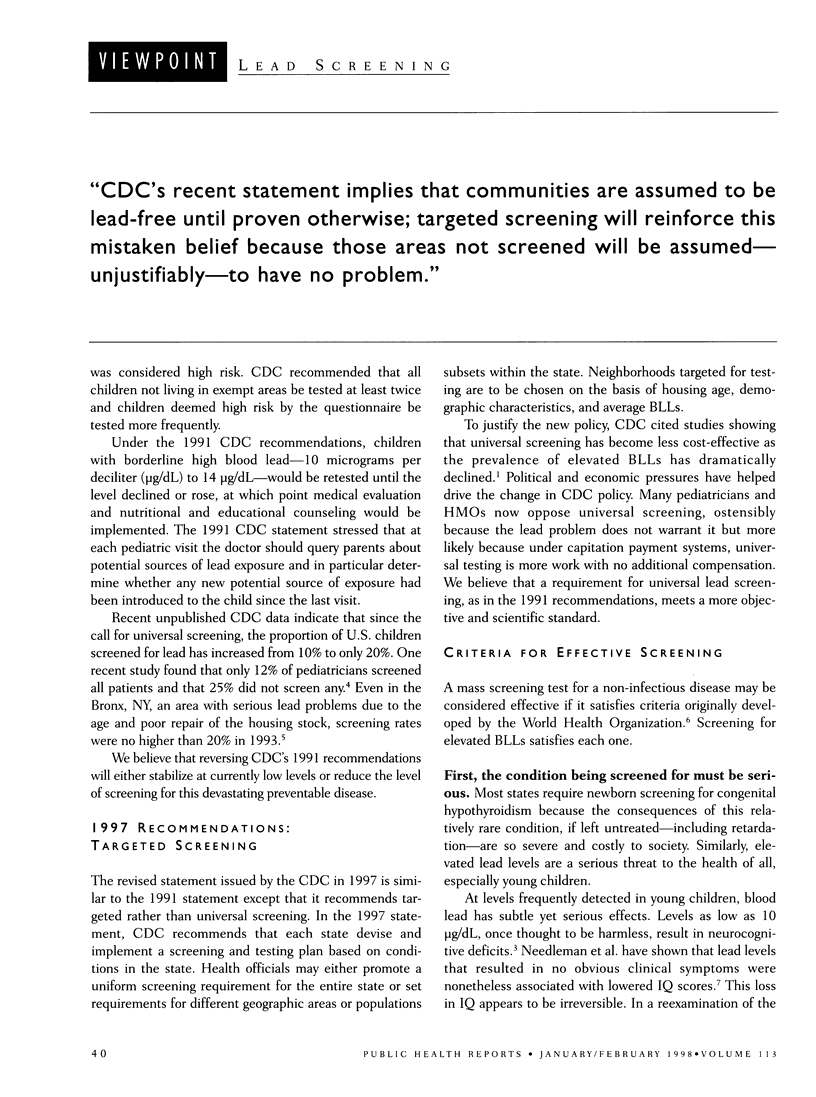
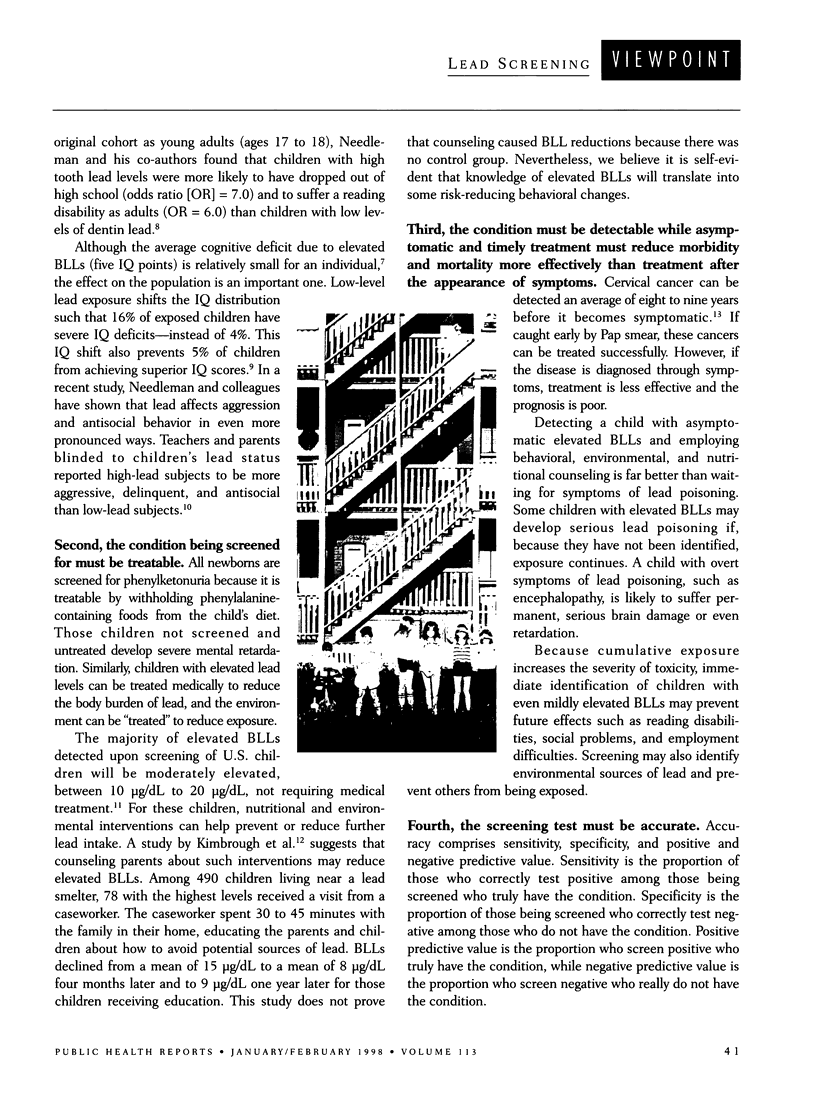
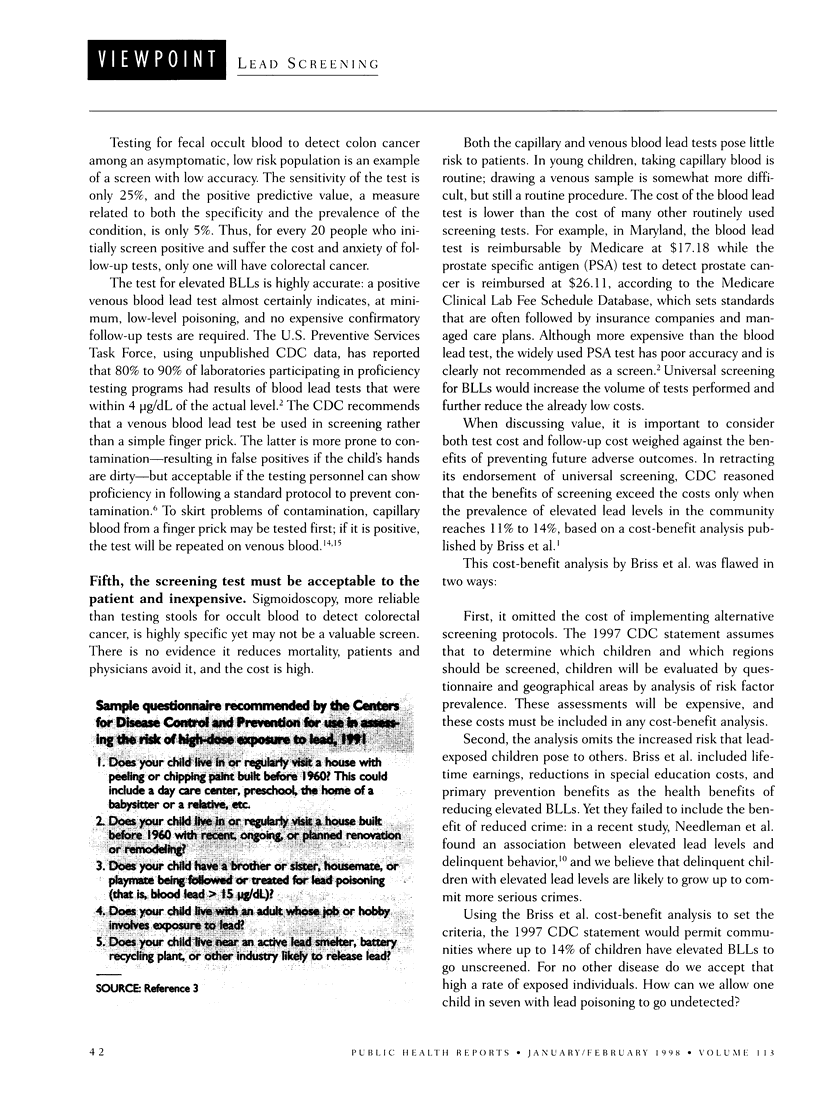


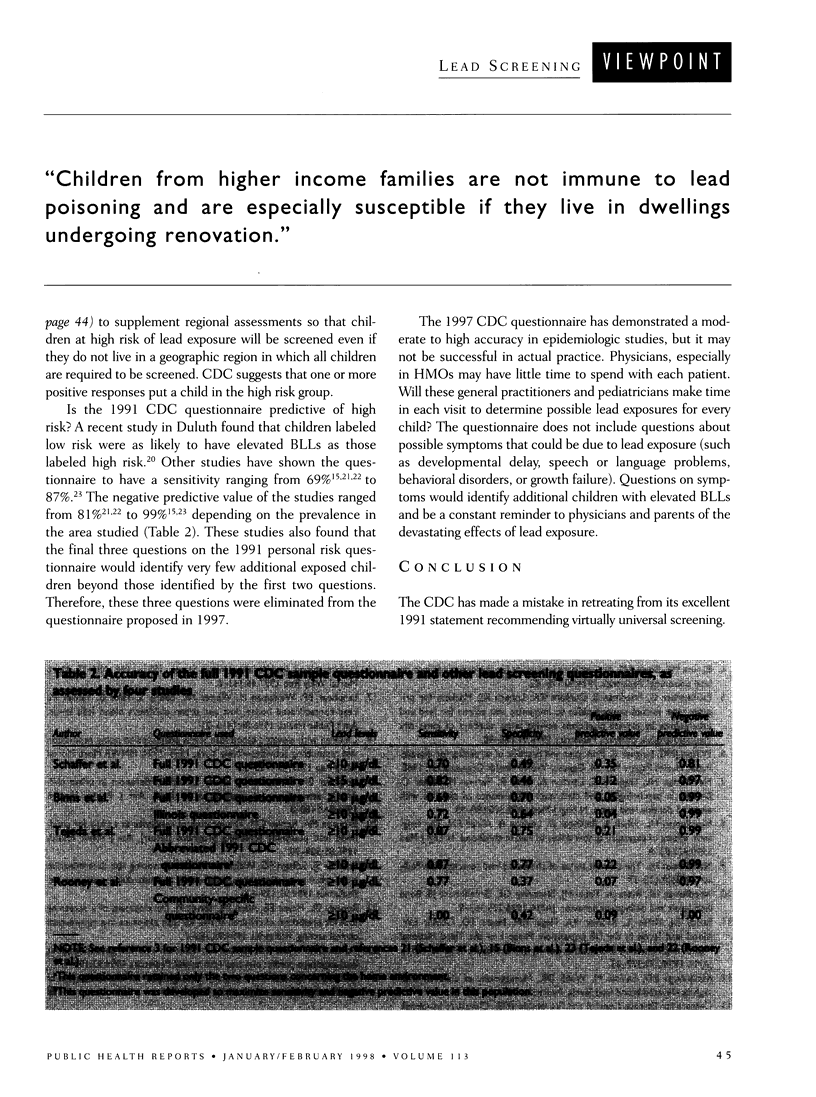
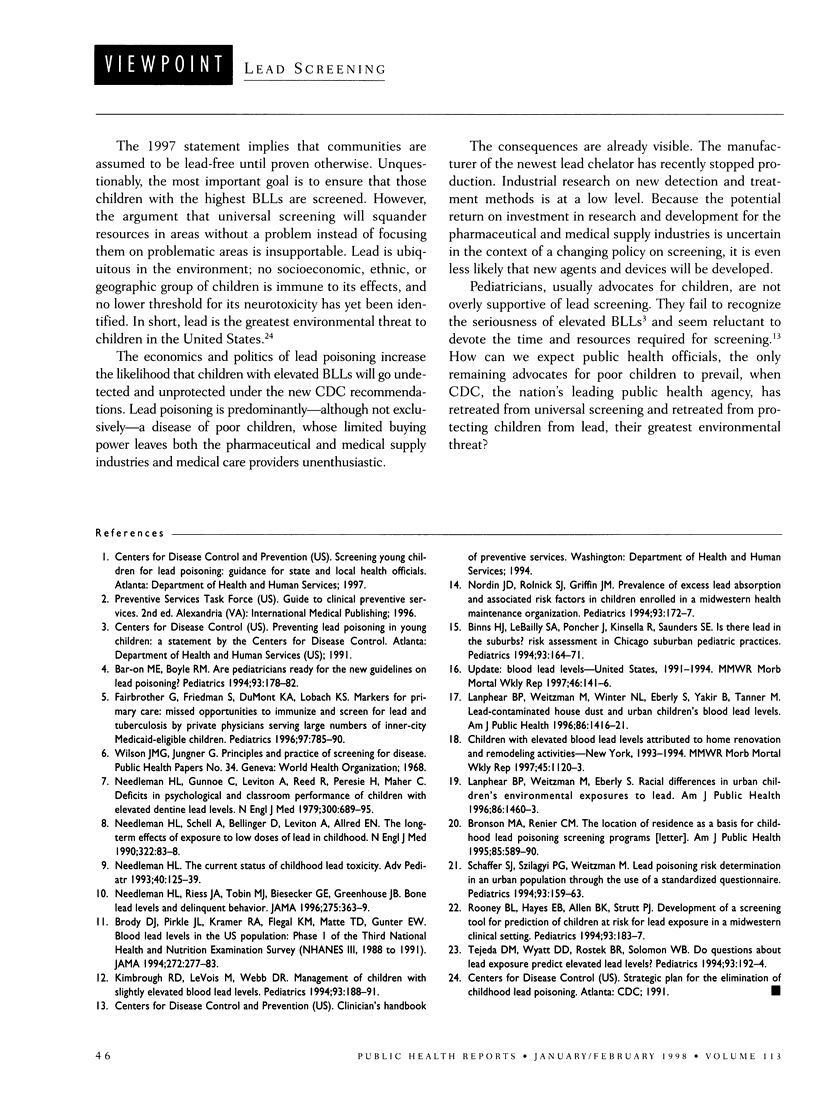
Images in this article
Selected References
These references are in PubMed. This may not be the complete list of references from this article.
- Bar-on M. E., Boyle R. M. Are pediatricians ready for the new guidelines on lead poisoning? Pediatrics. 1994 Feb;93(2):178–182. [PubMed] [Google Scholar]
- Binns H. J., LeBailly S. A., Poncher J., Kinsella T. R., Saunders S. E. Is there lead in the suburbs? Risk assessment in Chicago suburban pediatric practices. Pediatric Practice Research Group. Pediatrics. 1994 Feb;93(2):164–171. [PubMed] [Google Scholar]
- Brody D. J., Pirkle J. L., Kramer R. A., Flegal K. M., Matte T. D., Gunter E. W., Paschal D. C. Blood lead levels in the US population. Phase 1 of the Third National Health and Nutrition Examination Survey (NHANES III, 1988 to 1991) JAMA. 1994 Jul 27;272(4):277–283. doi: 10.1001/jama.272.4.277. [DOI] [PubMed] [Google Scholar]
- Fairbrother G., Friedman S., DuMont K. A., Lobach K. S. Markers for primary care: missed opportunities to immunize and screen for lead and tuberculosis by private physicians serving large numbers of inner-city Medicaid-eligible children. Pediatrics. 1996 Jun;97(6 Pt 1):785–790. [PubMed] [Google Scholar]
- Kimbrough R. D., LeVois M., Webb D. R. Management of children with slightly elevated blood lead levels. Pediatrics. 1994 Feb;93(2):188–191. [PubMed] [Google Scholar]
- Lanphear B. P., Weitzman M., Winter N. L., Eberly S., Yakir B., Tanner M., Emond M., Matte T. D. Lead-contaminated house dust and urban children's blood lead levels. Am J Public Health. 1996 Oct;86(10):1416–1421. doi: 10.2105/ajph.86.10.1416. [DOI] [PMC free article] [PubMed] [Google Scholar]
- Needleman H. L., Gunnoe C., Leviton A., Reed R., Peresie H., Maher C., Barrett P. Deficits in psychologic and classroom performance of children with elevated dentine lead levels. N Engl J Med. 1979 Mar 29;300(13):689–695. doi: 10.1056/NEJM197903293001301. [DOI] [PubMed] [Google Scholar]
- Needleman H. L., Riess J. A., Tobin M. J., Biesecker G. E., Greenhouse J. B. Bone lead levels and delinquent behavior. JAMA. 1996 Feb 7;275(5):363–369. [PubMed] [Google Scholar]
- Needleman H. L. The current status of childhood lead toxicity. Adv Pediatr. 1993;40:125–139. [PubMed] [Google Scholar]
- Nordin J. D., Rolnick S. J., Griffin J. M. Prevalence of excess lead absorption and associated risk factors in children enrolled in a midwestern health maintenance organization. Pediatrics. 1994 Feb;93(2):172–177. [PubMed] [Google Scholar]
- Rooney B. L., Hayes E. B., Allen B. K., Strutt P. J. Development of a screening tool for prediction of children at risk for lead exposure in a midwestern clinical setting. Pediatrics. 1994 Feb;93(2):183–187. [PubMed] [Google Scholar]
- Schaffer S. J., Szilagyi P. G., Weitzman M. Lead poisoning risk determination in an urban population through the use of a standardized questionnaire. Pediatrics. 1994 Feb;93(2):159–163. [PubMed] [Google Scholar]
- Tejeda D. M., Wyatt D. D., Rostek B. R., Solomon W. B. Do questions about lead exposure predict elevated lead levels? Pediatrics. 1994 Feb;93(2):192–194. [PubMed] [Google Scholar]



